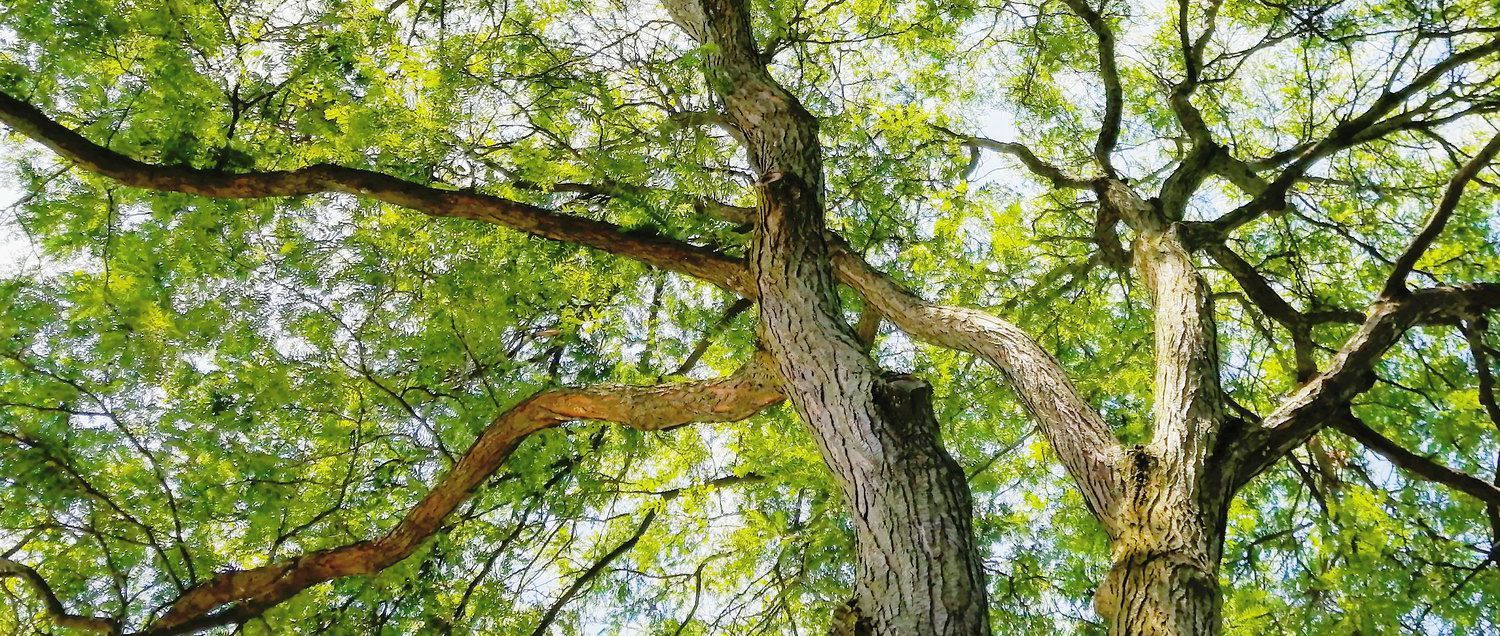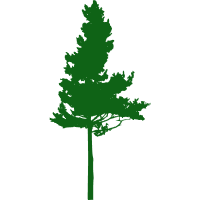Keep Your Trees Healthy » Tips from a Professional Arborist
Having healthy trees on your property can provide many benefits. It takes knowledge and effort to keep them in top condition. From identifying tree health issues to pruning and watering properly, our comprehensive guide will help you maintain the beauty of your yard while avoiding costly mistakes. Learn how a professional arborist covers all aspects of tree care so that you get the most out of every season with a lush and vibrant outdoor space.

Identifying Tree Health Issues
Trees are living organisms; like any other living thing, they can become sick. Identifying tree health issues early on is vital to keeping trees healthy and happy. A sign of an unhealthy tree is when its leaves begin to yellow or discolor, possibly due to too much sun exposure, nutrient deficiencies, pests, or diseases.
Another sign that a tree may be unhealthy is if its bark looks cracked or chipped off. You can also look for dead branches still attached to the trunk. A professional arborist should remove dead branches immediately, as they can cause further damage if left unattended.
Mushrooms cropping up near a tree's base can be a sign of trouble, so it pays to address the problem by calling an expert. While some species are innocuous, others can spread like wildfire and cause considerable damage to surrounding vegetation. An experienced arborist will know how to tackle them safely without causing further harm.
Seek help from an expert if you notice a swarm of bugs around your tree, as it could indicate some underlying issue. From aphids draining sap from the leaves to beetles boring into their woody parts, any sign of insects can signify trouble.
Finally, keep an eye out for hollowed trunks which could mean decay has set in deep within the core structure, making it unsafe and likely needing removal sooner rather than later - again - contact a qualified arborist ASAP. You can identify tree health issues through careful observation and monitoring of the tree's physical characteristics. Pruning is essential to keep trees in good condition. It helps them maintain their shape and guards against illnesses or bug invasions.
It pays to be proactive regarding tree health issues, so if you notice discoloration, yellowing leaves, bark cracks or chips, dead branches, mushrooms, or insects swarming the area, don't hesitate to call an arborist right away. Also, look out for hollowed trunks which could be a sign of decay deep within the core structure - these could need removal as soon as possible.
Pruning Trees for Optimal Health
Pruning trees is an integral part of maintaining their health. Trimming can assist in eliminating dead or infected limbs, decrease the size of a tree, and enhance its general form. It also helps to stimulate new growth and keep the tree healthy. The best way to prune a branch is by making cuts at an angle so that water runs away from any scars caused during pruning. Pruning will help prevent diseases from entering those areas and damaging your tree further down the line.
Doing no more than what is necessary when pruning your trees is also essential. It's best practice when removing branches for aesthetic reasons, such as thinning out crown density, only remove up to 25% per season to avoid stressing out your trees too much at once. Do you need assistance with identifying what needs trimming on your property? A certified arborist can advise which branches to remove without compromising safety or aesthetics.
Pruning trees correctly is essential in maintaining their health, as it helps remove dead or damaged branches and encourages healthy growth. Providing the right amount of hydration is necessary for keeping trees healthy and vibrant; let's explore how to ensure your tree gets what it needs.
Pruning should be done with precision and care to avoid excessive cutting. A certified arborist can advise which branches to remove for optimal results.
Watering Trees Properly
Watering trees is an integral part of their health and maintenance. It's essential to understand how much water your trees need and when. Trees require different amounts of water depending on species, age, size, soil type, and location. Generally speaking, most mature trees will need about 10 gallons per inch of trunk diameter each week during dry periods in the summer months.
To properly water a tree, you should use a soaker hose or slow-running sprinkler for deep root watering that allows for penetration into the ground below the surface level. The goal is to soak down 6-8 inches below where roots typically grow so that moisture can reach them more effectively than just surface watering with a garden hose or bucket, which only goes 1-2 inches deep at best. Too much water can be detrimental, potentially leading to root rot and nutrient deficiencies caused by an absence of oxygen in the soil when it is saturated.
Creating a watering schedule specific to your area is also helpful by checking local weather forecasts and adjusting accordingly. During extended dry spells, more frequent watering might be necessary.
Lastly, remember that young trees - especially those recently planted - will require additional attention compared with established ones since they have yet to develop robust enough root systems capable of sustaining themselves without regular hydration from external sources. Watering trees properly is an essential part of keeping them healthy. Fertilizing trees is the next step in ensuring they remain strong and vibrant for years.
To ensure healthy trees, you can provide adequate hydration through deep root watering with a soaker hose or slow-running sprinkler. Consider your tree's species, age, size, and location when creating a specific watering schedule. Avoid over-watering, which can lead to nutrient deficiencies due to lack of oxygen in the soil from too much standing water around roots.
Fertilizing Trees Appropriately
Feeding trees the necessary nutrients and minerals can help them reach their full growth potential. It also protects them against diseases and insect infestations. Fertilizing can give trees the necessary nutrition and minerals to become robust and vigorous and guard against illnesses and bug invasions.
When applying fertilizer, ensure not to overdo it; too much can damage roots and leaves, causing discoloration or even death in extreme cases.
Fertilizing trees must be done at the right time to ensure optimal absorption by the root system. This varies depending on your tree type, but springtime is generally ideal. It allows plenty of time for root growth before winter sets in again. You should avoid feeding during late summer or fall because this could cause new development at an inappropriate time which may not survive cold temperatures come wintertime.
Finally, remember to mulch after fertilizing. Adding mulch around your trees will help retain moisture and keep weeds away, both of which aid in overall healthiness.
Fertilizing is critical for tree health, so picking the proper fertilizer and applying it at a suitable time in spring is essential. Furthermore, remember to top off your efforts by adding mulch around each tree for extra protection from weeds and moisture retention.
FAQs About Keeping Your Trees Healthy
How do I keep my trees healthy?
Maintaining the health of trees is crucial in ensuring they stay strong and beautiful. Regularly trimming, nourishing, hydrating, and covering with mulch is necessary to keep trees healthy. Prune dead or damaged branches as soon as possible to prevent diseases from spreading. Fertilize with slow-release organic fertilizer to provide nutrients for growth. Water deeply during dry periods but avoid overwatering, which can cause root rot. Use mulch around the base of your tree to protect roots from temperature extremes and retain moisture in the soil. Following these tips can foster a long-term flourishing environment for your trees.
How can we help our trees?
We can help trees by providing comprehensive services, including pruning and trimming to promote healthy growth, fertilizing to encourage robust root systems, removing dead or diseased branches for safety reasons, and planting new trees when needed. Additionally, we can advise on proper care techniques, such as watering schedules and pest control methods, to ensure that the trees remain healthy and vibrant over time.
Why are trees so important in our lives?
Trees are essential for our lives and the environment. Trees are indispensable for our well-being and the planet, offering us oxygen, unpolluted air, sustenance, refuge, and shade. Trees help to prevent soil erosion by stabilizing the ground around them. They also absorb carbon dioxide from the atmosphere and release oxygen. Trees provide habitats for wildlife while providing a beautiful backdrop to any landscape or home garden. In short, trees are an invaluable part of our lives that should be respected and preserved wherever possible.
Conclusion
You can use the tips provided to provide proper care to ensure your trees remain in optimal condition. A professional arborist can provide more detailed advice on keeping your trees healthy. Be sure to consult with one with questions or concerns about your trees.
Let Abbotsford Tree Specialists help you keep your trees healthy and beautiful. We offer comprehensive tree care services that will ensure the longevity of your trees.

